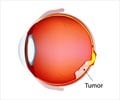
Based on an ORSF-sponsored workshop held June 14 – 16, 2013, the IOVS issue features new research on the genetics, biology, biochemistry, neurochemistry and the impact of nutrition and the environment on function in the older eye. Articles specifically address the economics of vision loss and the prevention and treatment of individual eye conditions. These include cataract, estimated to affect almost 22 million above the age of 40, and age-related macular degeneration, deemed the leading cause of blindness in people age 60 and older in the U.S.
According to the report, by 2015, over 10 million Americans will be blind or have significant visual impairment — with a staggering impact on the cost of healthcare for both individuals and society. Direct medical costs of retinal disorders in 2013 were approximately 8.7 billion; for treatable disorders such as cataract and refractive errors, the annual costs in the U.S. are 10.7 and $16.1 billion, respectively.
Chader stresses the special issue will help identify "low-hanging fruit" research opportunities and spur funding at basic research and clinical levels, ultimately resulting in sight-saving and sight-restoration measure. "ORSF hopes to illuminate the way to the best, practicable and most cost-efficient means of combating blinding eye diseases," he says.
Source-Eurekalert









